Modern air travel feels more like a cattle car than a premium service. But between 1950 and 1969, flying offered an elegant solution to long-distance travel woes. Passengers enjoyed spacious cabins with proper beds on overnight flights, not just reclining seats. Real silverware replaced plastic utensils while champagne flowed in crystal glasses. Social lounges encouraged genuine conversation instead of isolated scrolling on devices.
Those golden standards remind us what quality service actually means in the skies.
21. Check-in and Boarding Experience
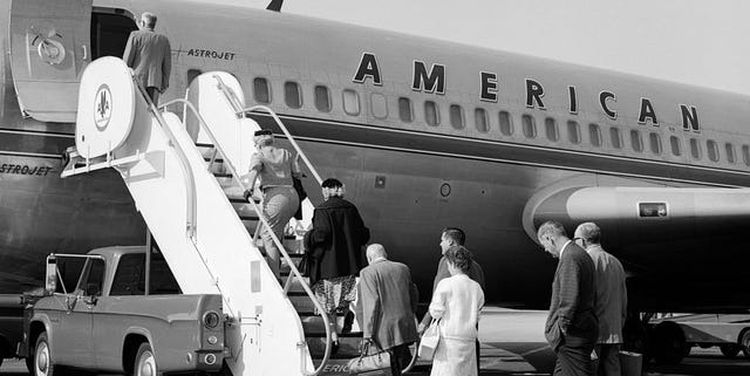
Elegant airport terminals with luxury hotel-like ambiance transformed the start of every journey. Before sterile corridors and security lines, terminals featured architecture that impressed rather than processed. Your name, not your confirmation number, mattered to staff. Security screenings? Almost nonexistent. Travelers moved through terminals without today’s constant hurry. Handwritten boarding passes added a personal touch to your journey. Families waved goodbye from observation decks as planes departed. From check-in to boarding, the process flowed with dignity and grace. If you’re nostalgic for human connection in travel, these gracious terminals would have felt like a welcome home rather than a processing center.
20. The Flight Experience

If you’re tired of cramped modern flights, the golden age cabin would feel like a revelation. Spacious interiors welcomed passengers with seats designed for human bodies. Legroom wasn’t a luxury – it was standard. Professional chefs prepared multi-course meals served on real china with proper silverware. Airlines prioritized high passenger-to-crew ratios ensuring attentive, personal service. Flight attendants often remembered returning passengers and their preferences, exemplifying the exceptional service and perks of flying in the golden age. Interior design borrowed from luxury hotels rather than maximizing headcount. A single flight attendant typically served just 14-20 passengers, creating an experience more akin to fine dining than mass transportation.
19. Luxury and Comfort
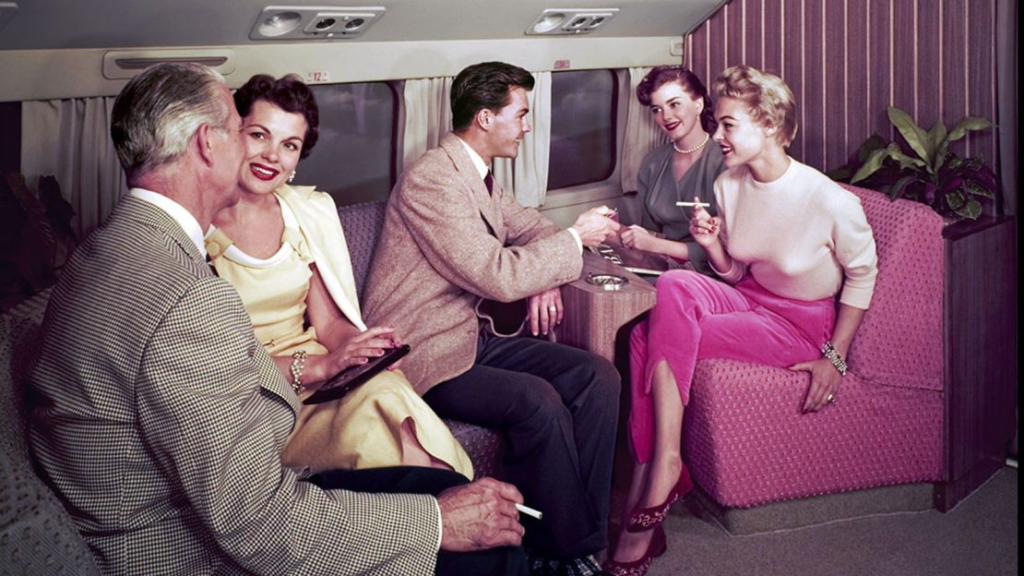
An astounding 40 inches of legroom greeted passengers as they settled into their seats. Aviation historians still marvel at this golden age standard, not available as an upgrade but given to every traveler. Long-haul flights featured seats that transformed into proper beds. Everyone received premium amenities – quality blankets, plush pillows, and elegant toiletry kits. Larger aircraft contained special lounges and social areas where passengers mingled freely. Meal service compared favorably with high-end restaurants of the day. Crew members treated each traveler with genuine attention and care. Caught between a flight delay today? Imagine waiting in a plush lounge with cocktail service instead of crowded gate seating.
18. Onboard Atmosphere

Golden age flights made conversations with strangers feel natural. Unlike today’s silent cabins, these journeys fostered genuine social connection. Strangers became acquaintances over shared experiences. Conversations flowed naturally across aisles. Stewardesses served cocktails with genuine warmth. Without personal screens, passengers engaged with each other. Some read books or magazines while others admired views through wide windows. Many business relationships and friendships began at 30,000 feet. Passenger surveys from the era showed over 65% reported making meaningful connections during their flights – something barely imaginable in today’s digital cocoons.
17. Lasting Legacy
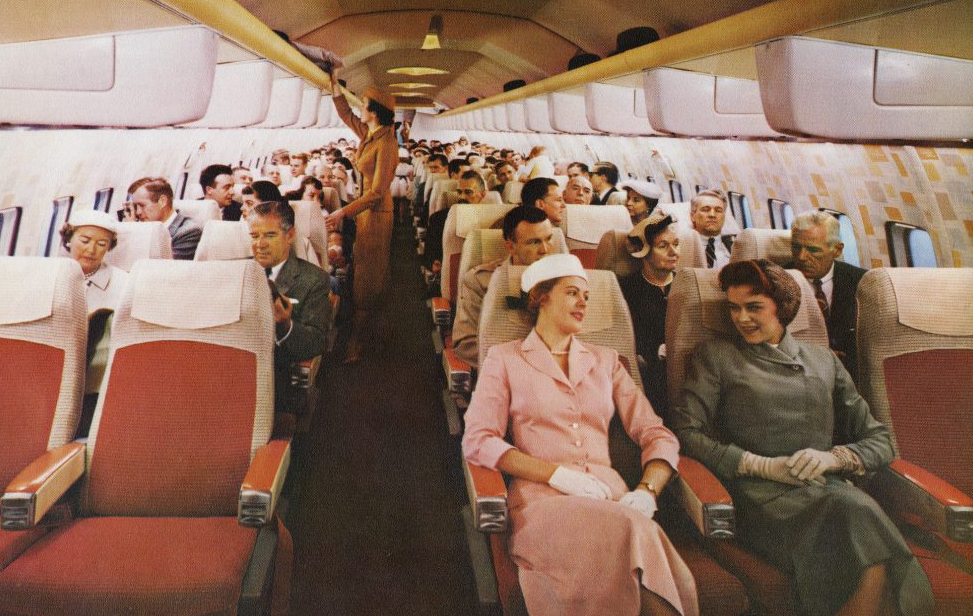
The golden age’s influence extends far beyond its era. Aviation enthusiasts eagerly seek Pan Am luggage tags and vintage TWA posters at collectors’ markets. Contemporary aircraft designers frequently borrow elements from those elegant fuselage shapes. Aviation museums dedicate entire sections to preserving these flying time capsules. Even passengers who never experienced it firsthand hold expectations of service quality shaped by stories of aviation’s golden era. Some of these once-common luxuries extended into the 1970s air travel before gradually fading entirely.
16. Fine Dining in the Skies
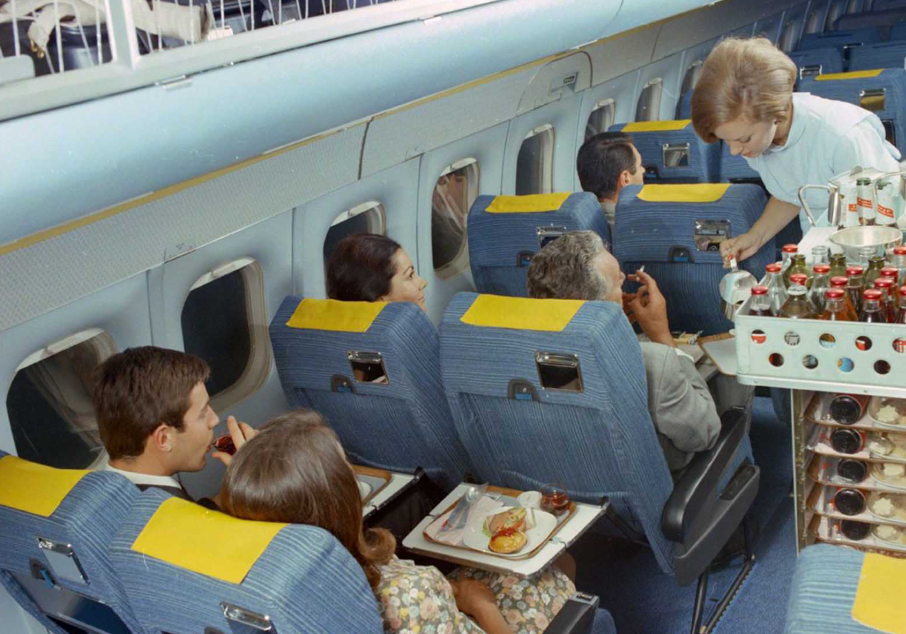
Hungry air travelers today would hardly recognize the gourmet experience of yesteryear. Meal service during the golden age truly deserved the term “dining.” Proper china plates replaced today’s disposable containers. Sterling silver utensils gleamed in cabin lighting. Knowledgeable crew members suggested appropriate wine pairings with each course. Menu quality competed successfully with respected ground-based restaurants. Passengers enjoyed unhurried multi-course meals served with elegance. Each meal cost airlines approximately $15-20 in 1950s dollars (equivalent to $150-200 today) – an investment in quality that modern carriers have largely abandoned.
15. Extravagant Experience
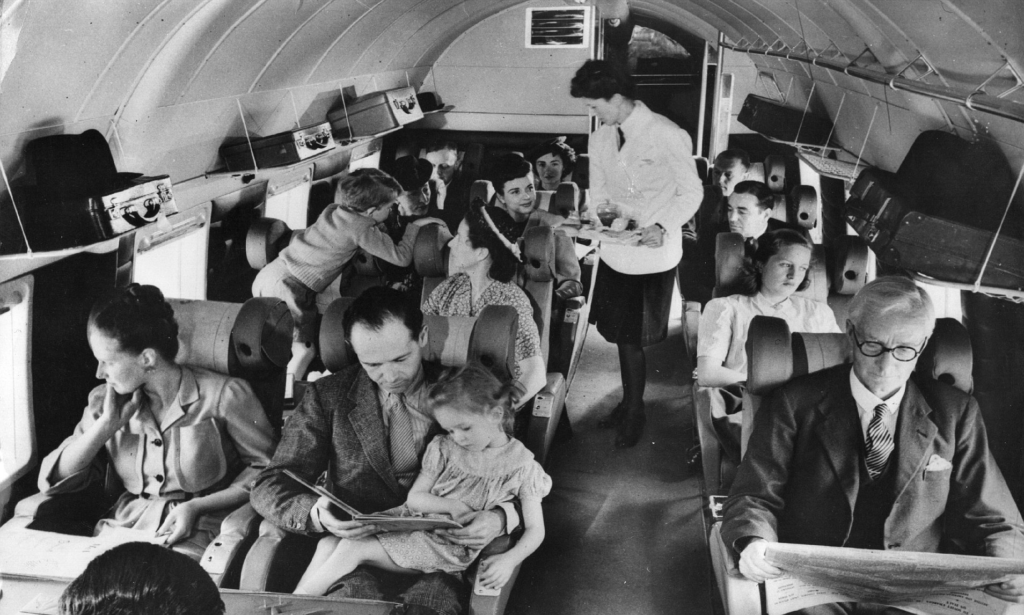
Many aviation historians celebrate the remarkable attention to luxury details that defined the era. From archives and interviews, countless stories emerge of extraordinary service touches. Buffet carts offered genuinely appealing options rather than pre-packaged alternatives. Special dietary requests received careful attention from dedicated kitchen staff. Tables featured pressed linen cloths and napkins. Champagne flowed in actual crystal glassware, not plastic cups. The entire journey pampered passengers in ways that would seem outlandish by today’s utilitarian standards. If you’re searching for this level of attention today, you’d need to charter a private jet – the last vestige of true golden age service philosophy.
14. Why it was so Expensive
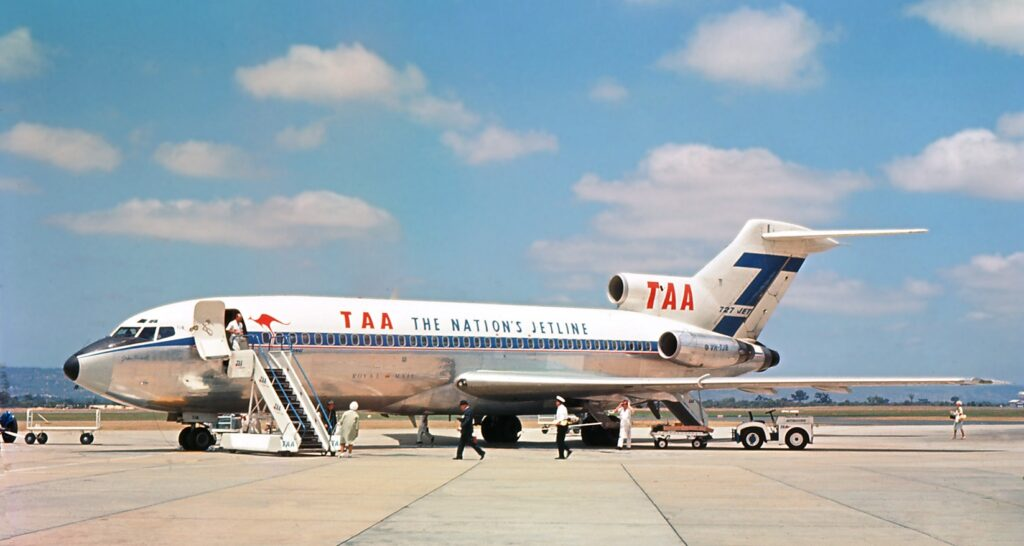
Wonder why a round-trip ticket could cost the equivalent of a month’s salary? The steep price tags of golden age tickets had solid economic foundations. Airlines catered to wealthy travelers who demanded impeccable quality. Kitchen budgets included premium ingredients sourced from top suppliers. Complimentary open bars stocked with premium spirits significantly increased operating costs. The numerous staff required for personalized service drove labor expenses skyward. Tickets might cost the equivalent of several thousand modern dollars, yet passengers generally considered the experience worth the investment. A New York to London round-trip in 1955 cost around $900 – equivalent to about $9,500 today when adjusted for inflation.
13. Smoking on Planes
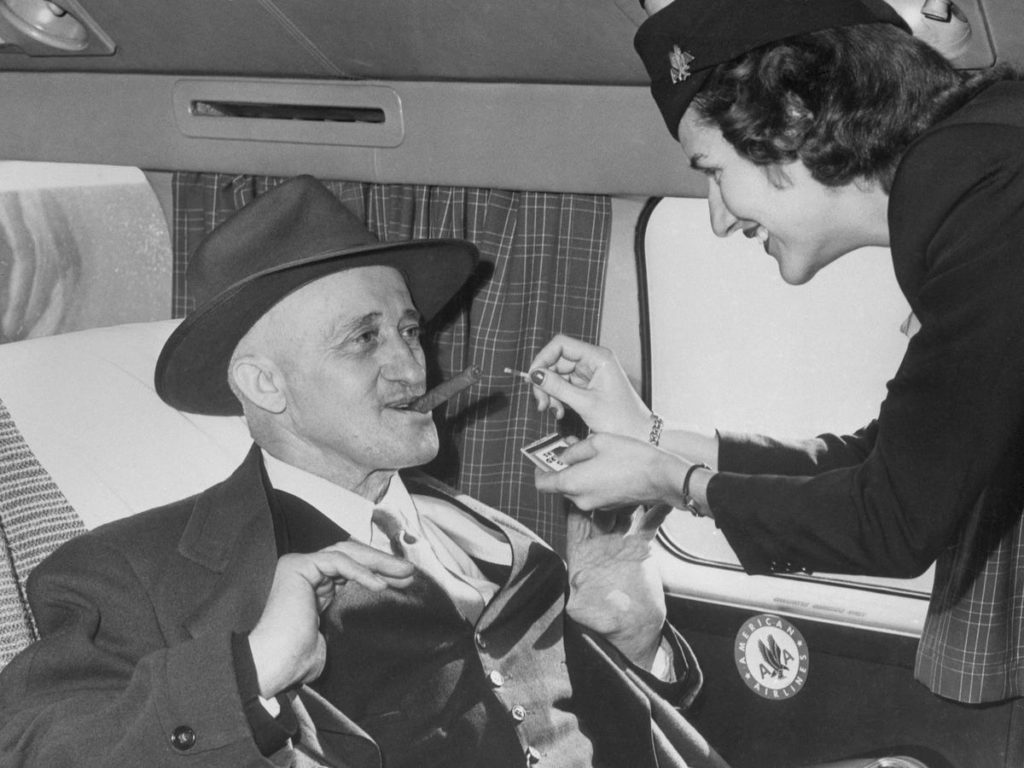
Free cigarettes greeted passengers as they boarded golden age flights. Through preserved artifacts and cabin photos, we see smoking’s prevalence in early commercial aviation. Designated smoking areas featured specialized ventilation and comfortable seating. Engineers built ashtrays directly into every seat arm, a standard design element. Health concerns about secondhand smoke rarely entered conversations. This acceptance of smoking inside aircraft cabins perfectly illustrates the different social norms of 1950s air travel. Caught between eras, the first smoking ban on domestic flights didn’t appear until 1988, marking a stark shift in attitudes toward in-flight air quality.
12. Onboard Entertainment
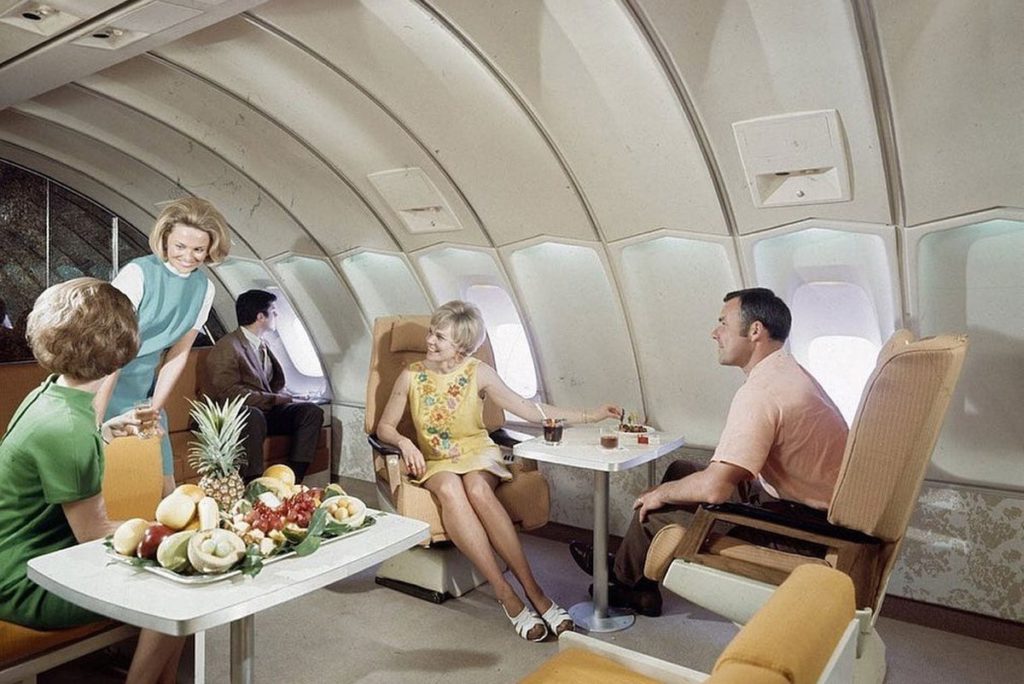
Fliers were unlikely to feel bored during their golden age flight. Traditional pastimes dominated the in-flight experience. Carriers stocked abundant reading materials ranging from newspapers to popular magazines. Playing cards, chess, and backgammon sets circulated among interested passengers. On special routes, small musical ensembles occasionally performed for appreciative audiences. Attentive crew members facilitated these activities with genuine enthusiasm. Without personal screens and digital distractions, human interaction and conversation naturally became the primary entertainment. The live piano bar aboard some Pan Am Stratocruiser flights transformed routine travel into what passengers described as “flying cocktail parties.”
11. Sleeping Arrangements
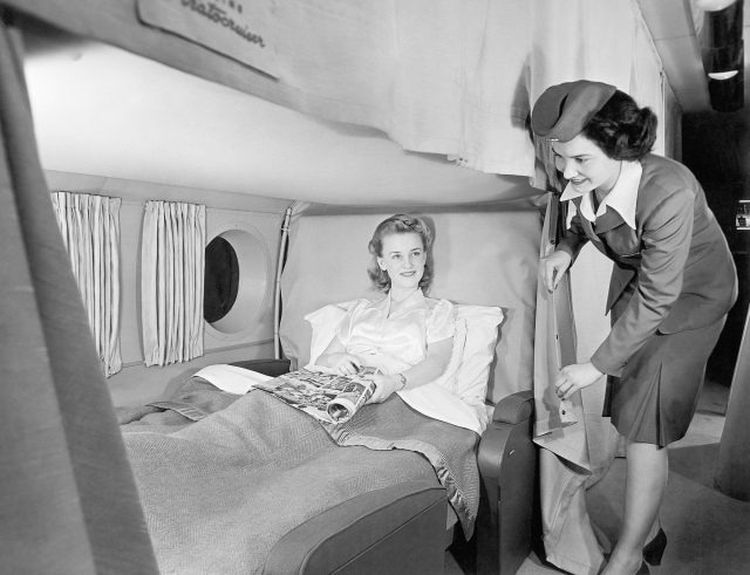
The Boeing Stratocruiser featured convertible seats that transformed into actual berths for overnight flights. Comfort during these journeys received serious engineering attention. Innovative seat designs converted into genuinely flat sleeping surfaces. Deep-reclining chairs featured ample padding and support for restful sleep. Quality pillows and wool blankets replaced today’s thin synthetic versions. Cabin crews performed turndown service similar to luxury hotels, preparing beds at passengers’ request. Travelers frequently arrived at international destinations well-rested rather than exhausted – a stark contrast to modern long-haul experiences. Those who endure sleepless modern red-eye flights would have appreciated these thoughtfully designed berths that effectively solved mid-air insomnia problems.
10. A Different Era of Flying

Exhausted by modern cattle-car flying? During aviation’s golden age, the journey itself mattered as much as the destination. Airlines prioritized passenger comfort over maximizing profit margins. Sophisticated service touches appeared throughout the experience. Social interaction occurred organically among travelers sharing a premium experience. Well-trained staff often anticipated passenger needs without requiring requests. This era established service benchmarks that fundamentally differ from modern air travel’s efficiency-focused approach. The breathing room was literal as well as figurative – flight occupancy rates typically hovered around 65-70%, a far cry from today’s packed 85-90% load factors.
9. Becoming a Stewardess in the 1950s
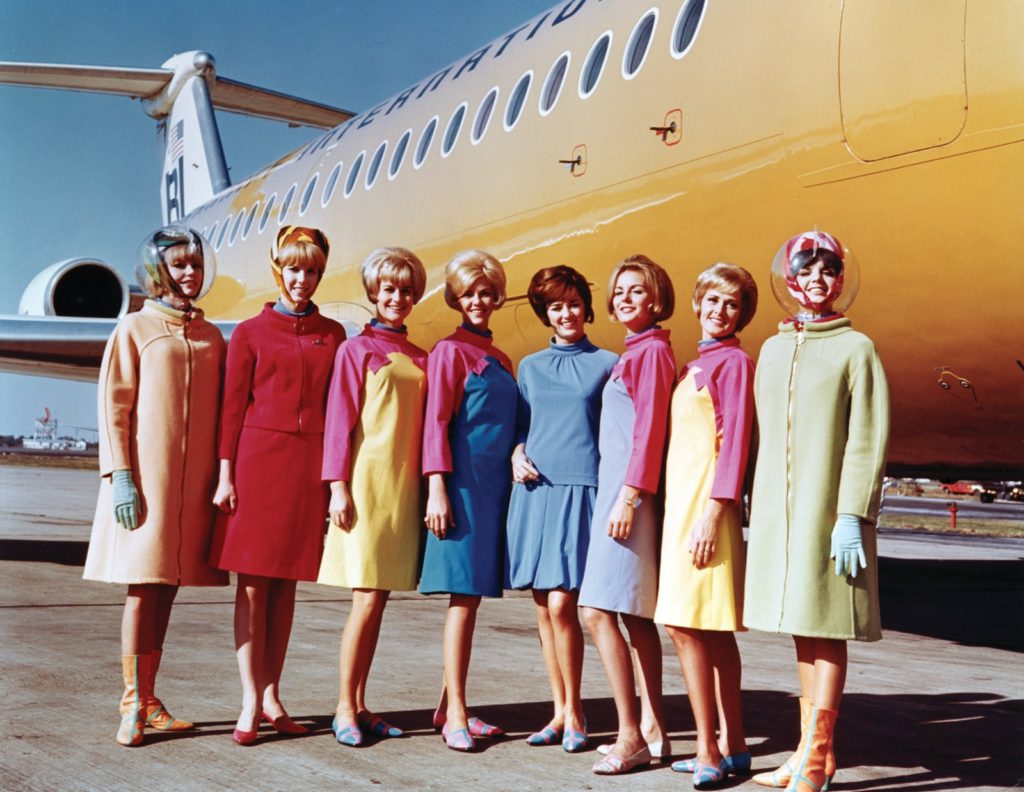
The Pan Am stewardess training facility resembled an elite finishing school more than job training. Selection criteria reflected extraordinarily demanding standards. Appearance reviews evaluated everything from hairstyle to nail polish color. Applicants faced elimination for lacking proper posture or etiquette skills. Training programs rivaled finishing schools in their attention to service details. Strict height requirements typically between 5’2″ and 5’9″ excluded many potential candidates. Graduates emerged as consummate service professionals who embodied mid-century ideals of elegance and hospitality. Modern travelers witnessing inconsistent cabin service might note that golden age hiring processes accepted just 3-5% of applicants, creating an ultra-selective pool of service professionals.
8. Handling Drunk Passengers
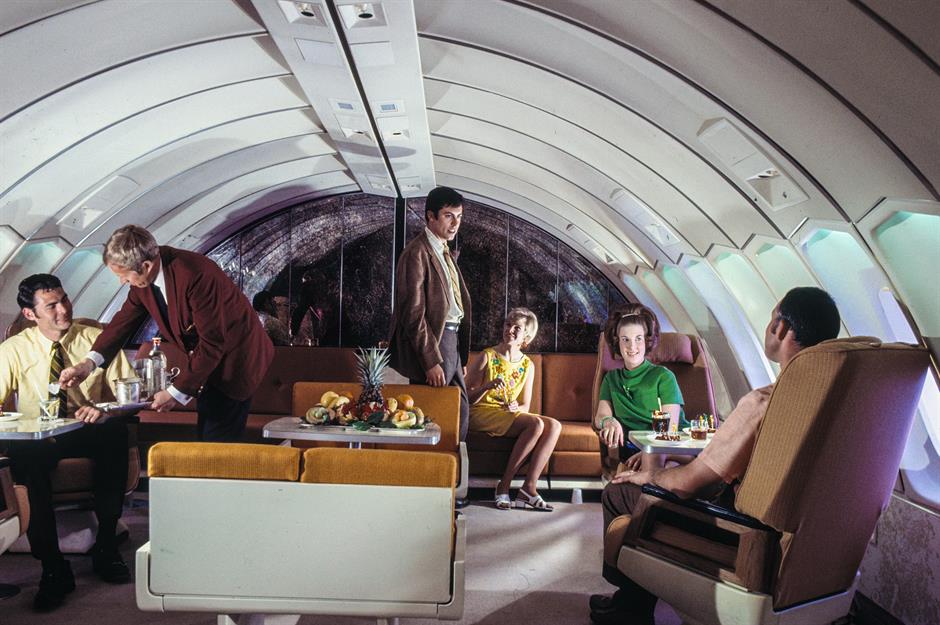
Disruptive passengers posed unique challenges that stewardesses managed with remarkable finesse. Preserved training materials provide fascinating insights into these delicate situations. Rather than direct confrontation, staff utilized charm and subtle psychology. Carefully worded suggestions replaced outright demands when addressing intoxicated travelers. Maintaining cabin harmony took precedence over strict enforcement of rules. Potential conflicts disappeared through skillful redirection and conversation techniques. These aviation professionals practiced a specialized form of high-altitude diplomacy rarely acknowledged in golden age nostalgia.
7. 1950s Air Travel Risks
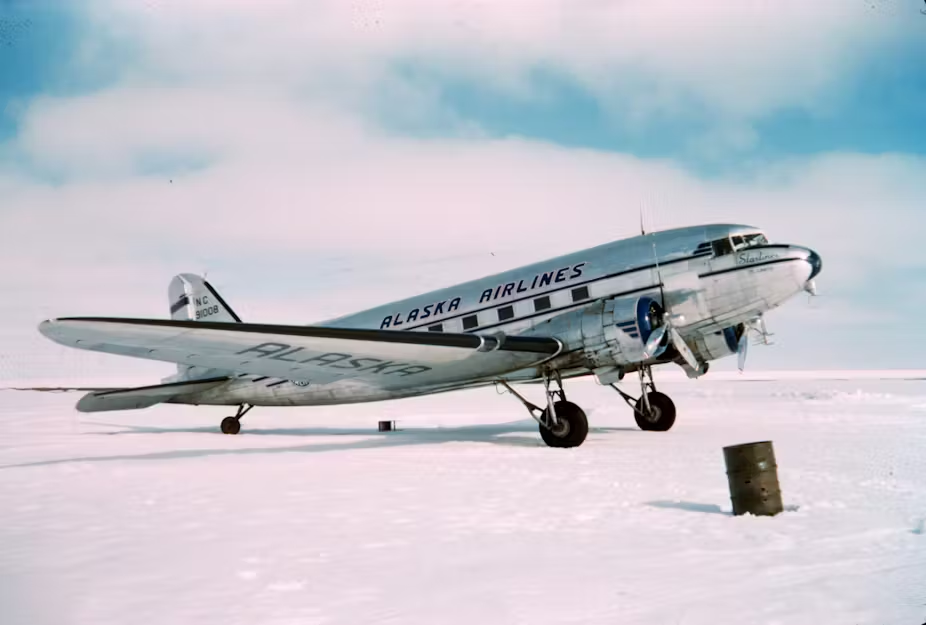
Flying at 10,000-20,000 feet exposed aircraft to weather that modern jets simply fly above. Behind the glamour, early commercial aviation faced substantial safety challenges. Aircraft typically flew at these lower altitudes where turbulence occurs more frequently. Navigational systems depended on ground-based radio beacons and pilots’ visual abilities. Airlines operated under safety standards considerably less comprehensive than current regulations. Emergency response capabilities lacked modern sophistication and equipment. The network of available routes and flight frequencies remained limited compared to today’s global system. As luxurious as the golden age appeared, it carried genuine risks that gradually diminished as the industry matured. If you prefer today’s safer aviation environment, you have good reason – fatality rates have dropped by over 97% since the 1950s.
6. Behind the Scenes of Air Control
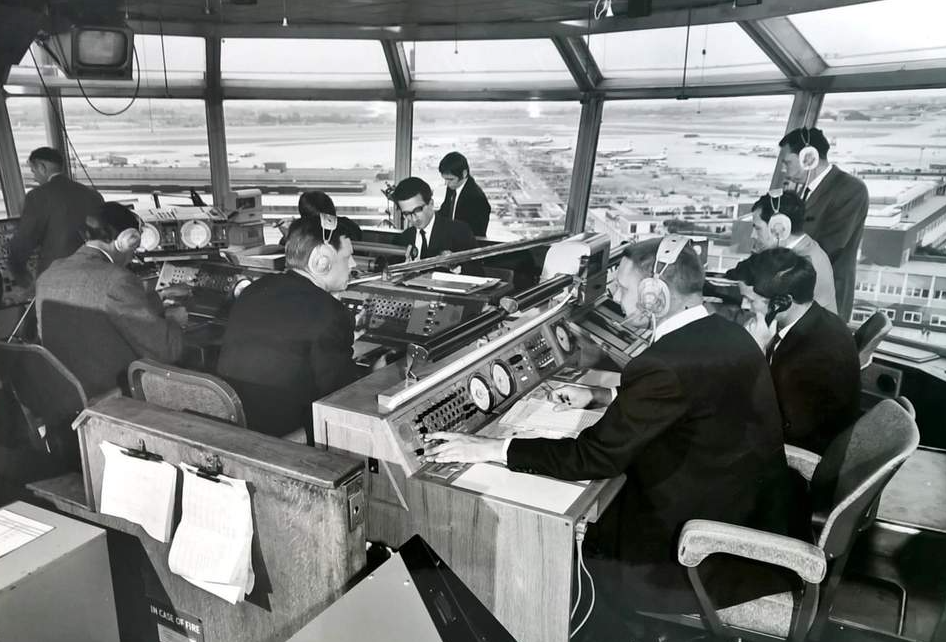
If you’ve ever wondered how planes navigated before GPS, the answer involved remarkable human skill. Air traffic management operated without today’s computerized systems. Controllers relied entirely on human judgment and spatial awareness skills. Constant radio communication formed the backbone of pilot-controller interaction. Ground-based radar stations provided coverage limited to approximately 200 miles from the facility. Flight crews navigated using paper charts, compasses, and visual landmarks. Despite these technological limitations, the system functioned effectively through exceptional human skill and unwavering attention to detail. Each major airport maintained a manual approach board with movable markers tracking each flight – a physical visualization system that today’s digital displays have rendered obsolete.
5. The Onboard Lounge
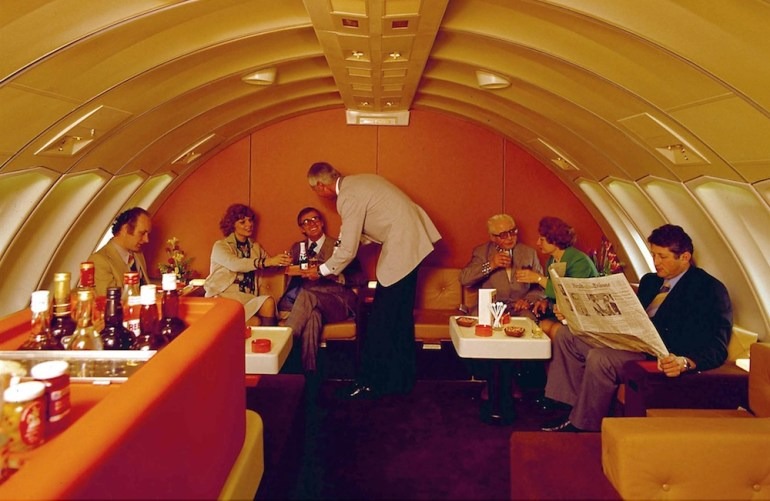
The Stratocruiser’s lower deck cocktail lounge made flying feel more like an exclusive club than transportation. Former crew members frequently cite these spaces as the defining feature of golden age aircraft. These areas featured full-service bars staffed by skilled mixologists serving custom-crafted cocktails. Certain aircraft models even incorporated observation areas with special viewing windows. Business travelers networked while leisure passengers socialized over drinks. For many flights, these lounges functioned as the social and emotional center of the aircraft. The dedicated social spaces transformed flying from mere transportation into a memorable experience. Modern travelers accustomed to cramped galleys would marvel at the 747’s original upper deck lounge that spanned 26 feet of dedicated social space – an amenity that disappeared as airlines prioritized additional seating.
4. The Rise of International Travel
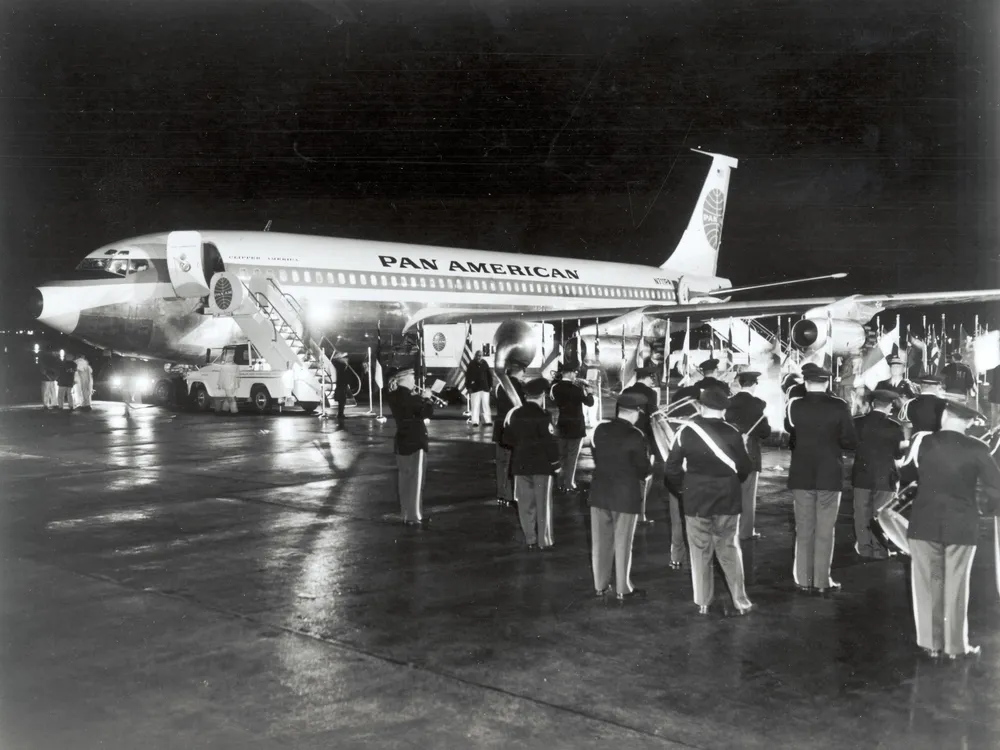
Overnight flights to Europe became possible with jet engines that shrank the Atlantic Ocean dramatically. This technology fundamentally altered humanity’s relationship with geography. Previously remote locations became realistically accessible to average travelers. Tourism expanded to exotic destinations formerly limited to adventurous explorers. Extended flight durations created social environments similar to ocean liners. Passengers often formed lasting friendships during these shared journeys. For an entire generation, air travel represented their first opportunity to experience different cultures and distant countries firsthand. Flight time from New York to London dropped from 18 hours to just 7 hours with the introduction of jet aircraft – a revolution in international connectivity.
3. India’s Air Stewardess Uniforms
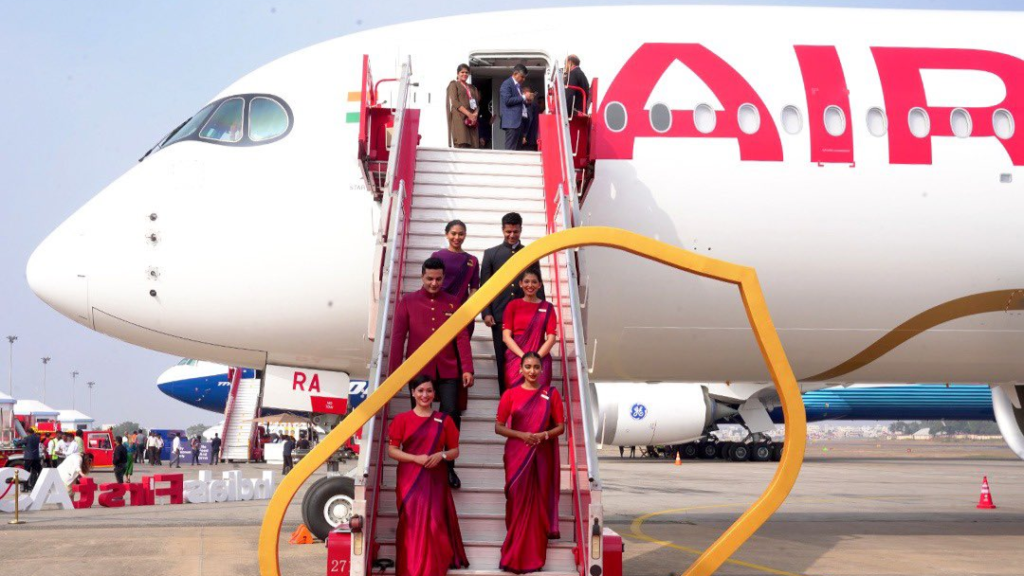
A 6-9 yard sari made Air India’s cabin crew instantly recognizable in terminals worldwide. Against industry norms, the airline made a bold cultural statement through uniform design. Their choice of traditional garments demonstrated national heritage and pride. These elegant garments instantly distinguished their staff in international terminals. Every uniform featured handcrafted textiles representing India’s exceptional fabric traditions. While Western airlines opted for increasingly modern looks, Air India deliberately embraced cultural identity. Their uniform choice brilliantly bridged ancient tradition with cutting-edge air travel technology. The remarkable skill of these stewardesses was evident as they managed to change into fresh saris during long flights in tight airplane bathrooms – a testament to their training and dedication.
2. Peter Seller’s 1960s TWA Ad
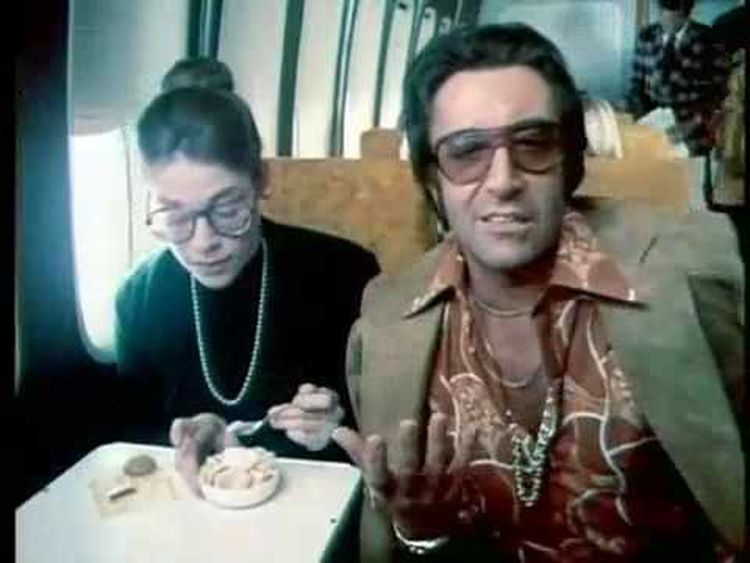
Humor in airline advertising? Peter Sellers pioneered the approach for TWA. The marketing strategy took a brilliant turn by enlisting his distinctive comedic talents. His uniquely British humor broke through conventional airline advertising approaches. Rather than focusing solely on aircraft features, these ads highlighted exceptional dining and onboard social experiences. The carefully crafted 30-second spots specifically promoted growing transatlantic route options. Marketing professionals still study how effectively these advertisements balanced sophisticated humor with luxury service messaging. The campaign increased TWA’s transatlantic bookings by 22% in the first quarter after launch – proof that the unconventional approach resonated with travelers.
1. The Jumbo Jet Era Begins
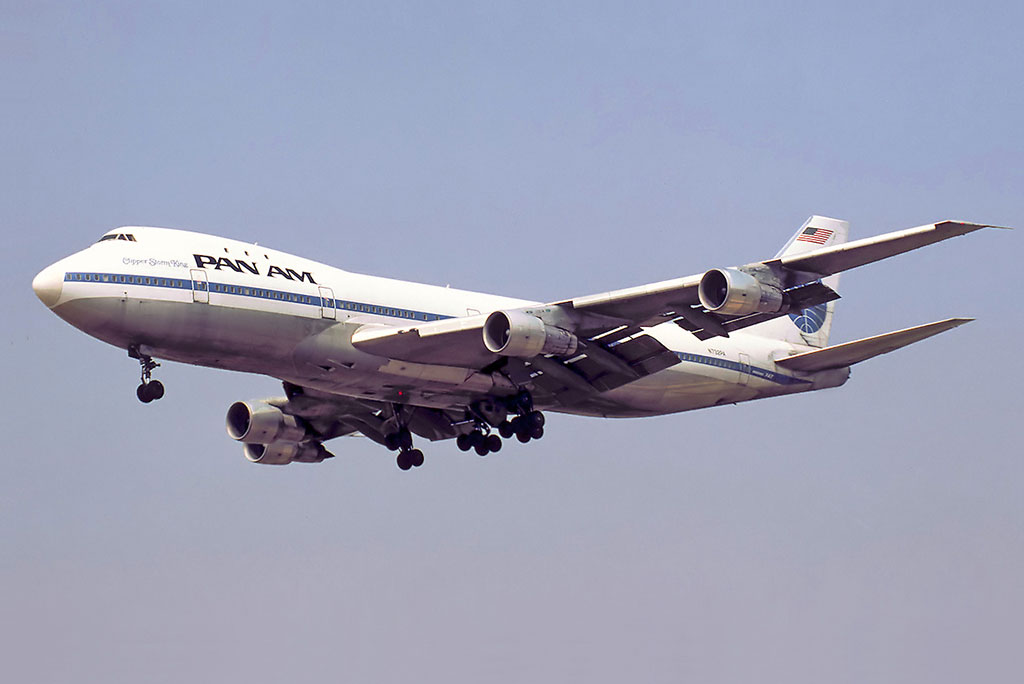
The mighty Boeing 747 fundamentally changed who could afford to fly. Aviation historians generally identify this jumbo jet introduction as the golden age’s conclusion. These massive aircraft fundamentally shifted priorities from luxury toward accessibility. More streamlined service approaches significantly reduced ticket costs. Dramatically higher passenger capacity transformed flying from exclusive experience to mass transportation. Many personalized service elements vanished as airlines adapted to larger customer volumes. Throughout the golden era, air travel symbolized luxury and social status while remaining financially out of reach for average citizens. Today’s affordable international travel stands as the jumbo jet’s greatest legacy – it sacrificed luxury for accessibility, making global tourism possible for millions of ordinary people.




























